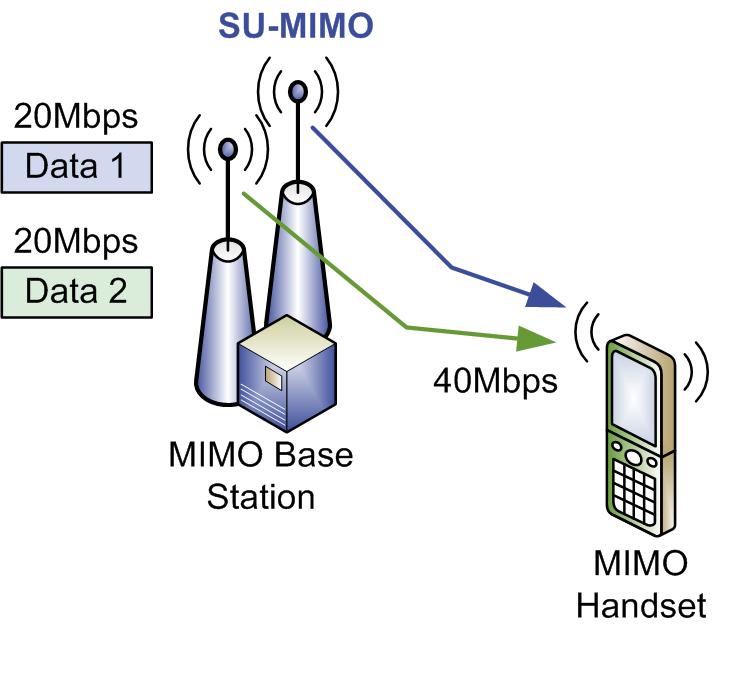SU-MIMO is one of the key technologies in LTE Rel 8. There are two major operations under SU-MIMO: transmit diversity and spatial multiplexing.
Transmit diversity is an efficient way to improve the reliability of a system. Accordingly, it is used in LTE Rel-8 for control channel and data channel of cell edge mobile stations (called user equipment [UE] in LTE/LTE-Advanced), and also as a fallback mode when feedback is unreliable. On the other hand, spatial multiplexing can be used to improve UE’s spectral efficiency, mainly targeted at cell center users.
LTE Rel-8 supports a maximum of four-layer spatial multiplexing in SU-MIMO. That is, a UE unit can receive at most four different streams from an eNB in the downlink. In LTE Advanced, the maximum number of layers supported in SU-MIMO is extended to eight to achieve a twofold increase in peak spectral efficiency.
Other than the number of supported layers, the major operational difference between Rel-8 SU-MIMO and Rel-10 SU-MIMO lies in the aspect of beamforming/precoding. Rel-8 SU-MIMO was developed under the codebook based precoding framework where transmit precoding vectors/matrices at the eNB are confined within a finite codebook.
As demodulation is based on the unprecoded common reference signals (CRS), the precoder at eNB needs to be explicitly signaled to the UE in a separate physical downlink control channel (PDCCH) to enable MIMO decoding.
Obviously, codebook-based precoding limits the eNB’s precoding flexibility, which is particularly important for MU-MIMO that relies on beamforming to pre-mitigate the inter user interference. To that end, non-codebook based precoding was introduced in LTE-Advanced through the introduction of multilayer demodulation reference signals (DMRS). Because the DMRS is precoded with the same precoding vector/matrix as DL data, the effective composite channel after precoding can readily be measured with DMRS, obviating the need to explicitly signal the transmit precoder to the UE.
Furthermore, the eNB may choose arbitrary precoding vectors/matrices and achieve greatly improved precoding flexibility for both SU-MIMO and MU-MIMO operations.
Although non-codebook-based precoding has a relatively small performance difference from codebook-based precoding for SU-MIMO (especially with a sufficiently well designed LTE codebook), it is proven to be the key enabling feature for MU-MIMO in LTE-Advanced.
Channel state information (CSI) feedback in LTE is based on implicit feedback where UE reports a set of recommended MIMO transmission properties (RI/PMI/CQI). The same feedback scheme is applied in LTE-Advanced for both SU-MIMO/MU-MIMO.
